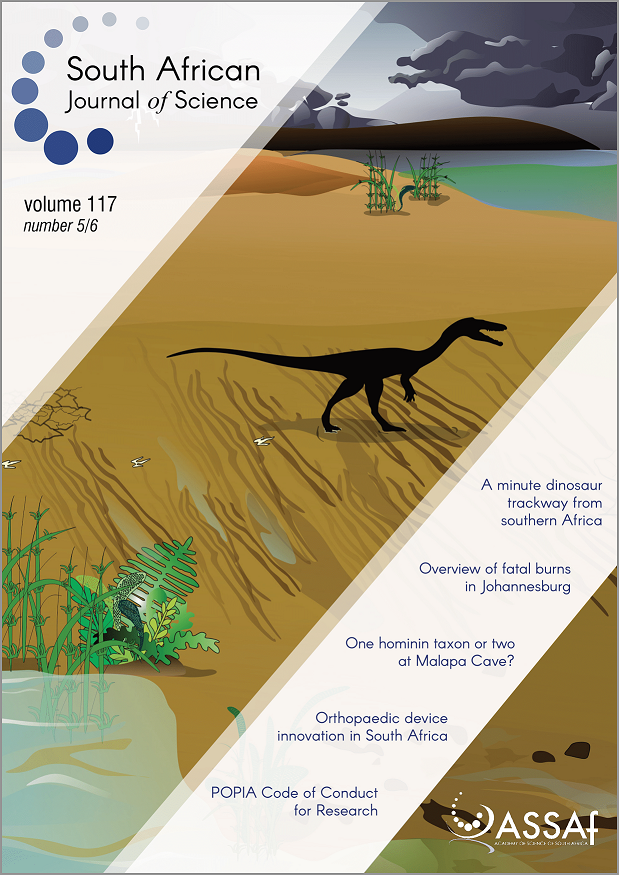Monitoring changes in South Africa’s surface water extent for reporting Sustainable Development Goal sub-indicator 6.6.1.a
DOI:
https://doi.org/10.17159/sajs.2021/8806Keywords:
SDG 6, wetlands, remote sensing, lacustrine wetlands, hydroperiodAbstract
For the first progress reporting on the Sustainable Development Goal sub-indicator 6.6.1a in 2020, the South African and global statistics related to wetlands were compared. Firstly, in terms of the total wetland extent, the South African National Wetland Map version 5 (NWM5) represented 87% more inland, surface aquatic ecosystems than the Global Surface Water (GSW) product. More than half of the lacustrine systems and none of the palustrine and arid systems in NWM5 are represented in the GSW layer. Secondly, in terms of changes in the extent of wetlands, both the global and South African statistics showed a decreasing trend in the spatial extent of surface aquatic ecosystems in South Africa. These trends should be further investigated against systematic assessments of decadal drought periods. The hydroperiod information (permanent, seasonal and ephemeral inundation periods) of the GSW products show that South African lacustrine wetlands do not have a single dominant class (≥70% of the extent of a polygon) of inundation, but consist of a mosaic of these classes.
Significance:
- The South African National Wetlands Map version 5 represents 87% more of the extent of lacustrine, palustrine and arid wetlands than the Global Surface Water products that are used for progress reporting on the Sustainable Development Goal sub-indicator 6.6.1a.
- South African and global statistics suggest a decline in the extent of lacustrine wetlands, although a systematic comparison with decadal drought periods is required to confirm these trends.
- South African lacustrine wetlands consist of a mosaic of hydroperiod classes (permanent, seasonal and ephemeral inundation periods) with no individual class dominating (≥70% of the extent of) wetlands polygons.
Published
Issue
Section
License

All articles are published under a Creative Commons Attribution 4.0 International Licence
Copyright is retained by the authors. Readers are welcome to reproduce, share and adapt the content without permission provided the source is attributed.
Disclaimer: The publisher and editors accept no responsibility for statements made by the authors
How to Cite
- Abstract 839
- PDF 777
- EPUB 152
- XML 198













.png)